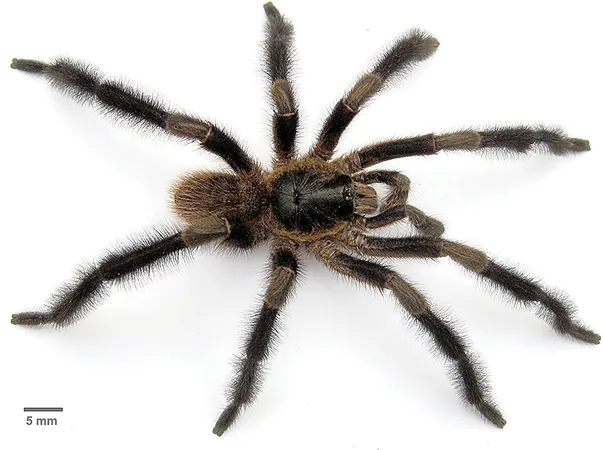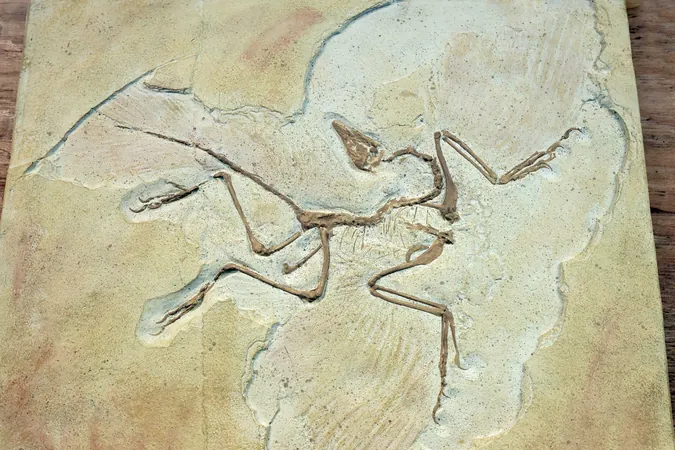
Meet Trichopelma Grande: Cuba's Enormous Feather-Duster-Legged Tarantula
2024-11-18
Author: William
Introduction
A groundbreaking discovery in the lush landscapes of western Cuba has unveiled a remarkable new species of tarantula, aptly named Trichopelma grande. This newfound giant, identified by researchers David Ortiz from Masaryk University in the Czech Republic and Elier Fonseca from the Cuban Zoological Society, boasts impressive size and an impressive hairiness, surpassing all other known species in its category.
Cuba's Unique Biodiversity
The Greater Antillean islands, which include Cuba, Hispaniola, Jamaica, and Puerto Rico, serve as a biological treasure trove for the study of evolution. Once interconnected, these islands have been isolated for millions of years due to natural barriers, allowing species to evolve independently and resulting in an astonishing array of unique flora and fauna.
The Discovery
Tarantulas have especially thrived in this environment. The work surrounding this discovery is encapsulated in the study titled 'A Hairy Giant Among Dwarves: Trichopelma Grande, a Distinct New Species of Tarantula from Cuba,' published in the Journal of Natural History. Utilizing advanced phylogenomic techniques and Ultraconserved Elements (UCE) sequencing, researchers conducted a thorough analysis of the new species, extracting high-quality DNA for comparison with other members of the theraphosid family tree. Their findings confirmed Trichopelma grande as closely related to the Costa Rican spider Trichopelma laselva.
Physical Characteristics
What sets Trichopelma grande apart? The adult males exhibit a striking abundance of long hair on their legs, which gives them a feather-duster-like look—a characteristic more common in tree-dwelling tarantulas than in their ground-dwelling relatives. This species, however, prefers the earth, inhabiting trap-door burrows rather than trees, aligning perfectly with the behaviors associated with its genus.
Appearance and Habitat
In addition to its striking legs, the tarantula's abdomen features a unique pattern with distinct spots and alternating dark and light stripes, making it visually stunning. With thick, chestnut brown hairs around the edges of its body and a smooth center, Trichopelma grande showcases an alluring yet fearsome appearance to those fortunate enough to encounter it.
Conservation Status
Currently, this extraordinary spider has only been found in the Viñales National Park, an area known for its rich biodiversity, with all observed specimens located merely 20 kilometers apart. This limited range suggests that Trichopelma grande may face threats due to habitat restriction, highlighting the importance of conservation efforts to protect this unique species.
Conclusion
As the natural world continues to reveal its wonders, Trichopelma grande stands out not only for its size but for the vital role it plays in understanding evolutionary processes in isolated ecosystems. The discovery reinforces the need to explore and protect the rich biodiversity found within these enchanting landscapes.
Stay Tuned!
Stay tuned for more incredible revelations as scientists dig deeper into Cuba's extraordinary wildlife!









 Brasil (PT)
Brasil (PT)
 Canada (EN)
Canada (EN)
 Chile (ES)
Chile (ES)
 España (ES)
España (ES)
 France (FR)
France (FR)
 Hong Kong (EN)
Hong Kong (EN)
 Italia (IT)
Italia (IT)
 日本 (JA)
日本 (JA)
 Magyarország (HU)
Magyarország (HU)
 Norge (NO)
Norge (NO)
 Polska (PL)
Polska (PL)
 Schweiz (DE)
Schweiz (DE)
 Singapore (EN)
Singapore (EN)
 Sverige (SV)
Sverige (SV)
 Suomi (FI)
Suomi (FI)
 Türkiye (TR)
Türkiye (TR)